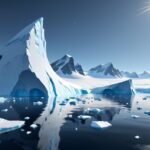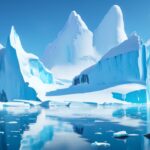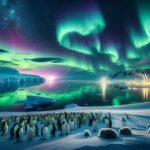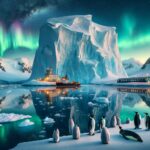Welcome to the captivating realm of Antarctica, a frozen continent teeming with secrets and surprises. In this article, we will embark on an adventure of discovery as we unravel 20 mesmerizing facts about this enigmatic land. From its breathtaking landscapes to its astonishing wildlife, prepare to be astounded by the wonders lurking within Antarctica’s icy embrace. Join us as we embark on a journey of exploration and enlightenment, uncovering the captivating mysteries of this remarkable continent.
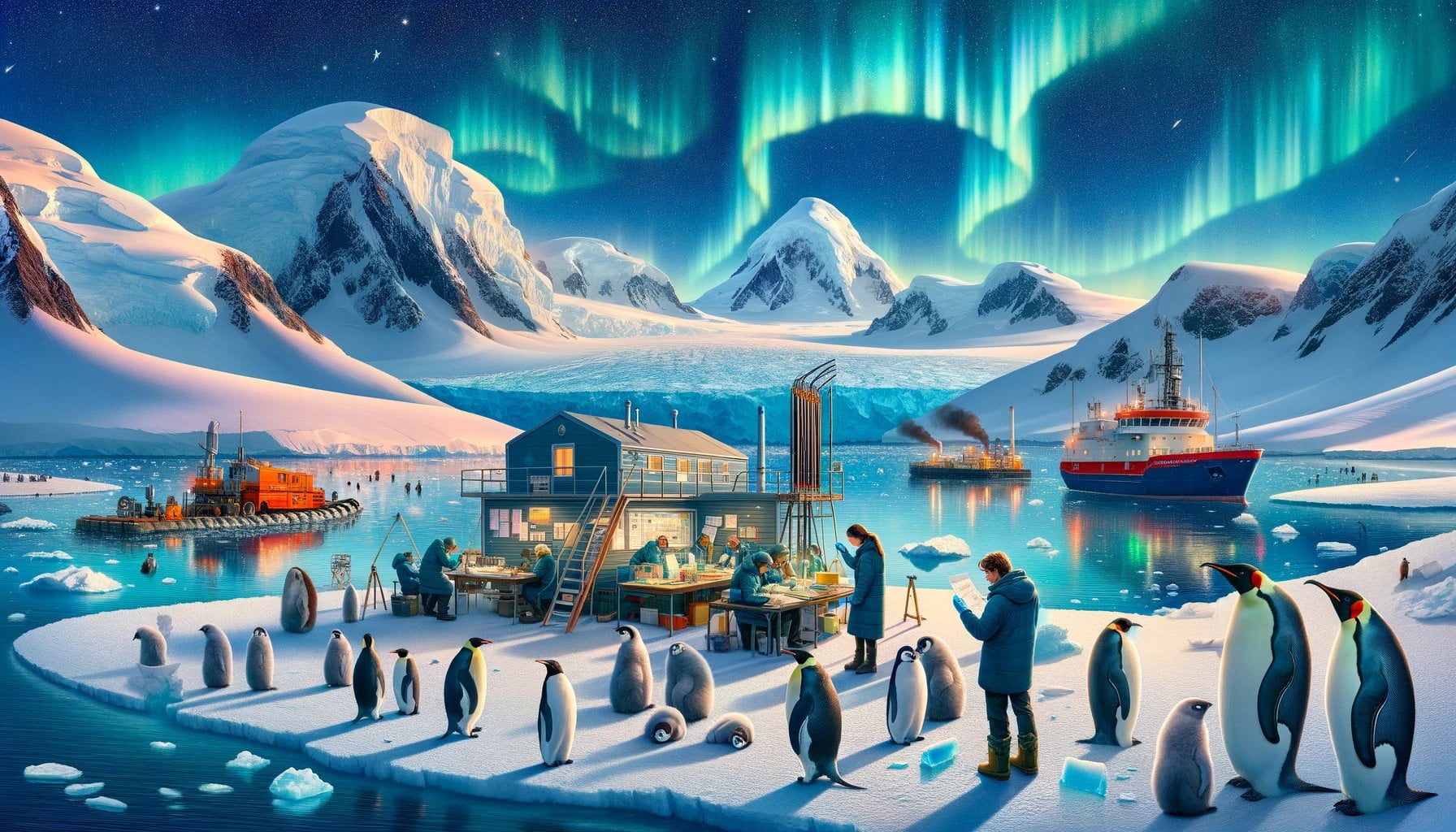
Key Takeaways:
- Antarctica is the fifth largest continent, covering 14 million square kilometers.
- 99% of Antarctica is covered in ice with an average thickness of 1.6 km, making it the driest continent on Earth.
- Antarctica contains about 70% of the world’s reserves of fresh water.
- The South Pole, located in Antarctica, experiences only one sunrise and one sunset each year.
- Antarctica does not have its own time zone.
- The coldest temperature ever recorded on Earth was in Antarctica.
- Antarctica expands to twice its size in winter due to freezing coastal sea water.
- Antarctica is home to the Gamburtsev Mountain Range, known as the ghost mountains.
- Roald Amundsen was the first person to reach the South Pole.
- Richard E. Byrd was the first person to fly over the South Pole.
- Antarctica is the only continent without reptiles and snakes.
- Antarctica is the only continent without a native human population, capital city, and government.
- Antarctica is governed by the Antarctic Treaty, which prohibits military and mining activities.
- The continent is home to unique wildlife such as penguins, seals, whales, and krill, adapted to the harsh conditions.
- Antarctica holds about 90% of the world’s ice and 70% of its fresh water.
- If the West Antarctic Ice Sheet melted entirely, global sea levels would rise by 16 feet.
- The Dry Valleys of Antarctica are the driest place on Earth with low humidity and minimal snow or ice cover.
- Antarctica is the windiest continent, with winds reaching up to 200 mph in some areas.
- Antarctica’s Vostok station holds the record for the coldest temperature ever recorded on Earth, at -128.56 degrees Fahrenheit.
What are 20 facts about Antarctica?
Antarctica, the icy and mysterious continent located at the southernmost part of our planet, holds numerous captivating secrets and intriguing facts. From its massive ice sheets to its unique wildlife, Antarctica is a place of rare wonders. Let’s dive into the mesmerizing world of Antarctica and uncover 20 fascinating facts about this frozen wilderness.
Fact #1: Antarctica is the fifth largest continent in the world, covering a vast territory of 14 million square kilometers[^1^].
Fact #2: 99% of Antarctica is covered in ice, with an average thickness of 1.6 kilometers[^1^].
Fact #3: Antarctica holds about 70% of the world’s reserves of fresh water[^1^].
Fact #4: It may come as a surprise, but Antarctica is the driest continent on Earth[^1^].
Fact #5: The South Pole, one of the most famous landmarks in Antarctica, experiences only one sunrise and one sunset each year[^1^].
Fact #6: Unlike other regions, Antarctica does not have its own time zone[^1^].
Fact #7: The coldest temperature ever recorded on Earth was in Antarctica, where it plummeted to an astounding -128.56 degrees Fahrenheit — a chilling reminder of the extreme conditions this continent endures[^3^].
Fact #8: In winter, Antarctica undergoes a transformation as the freezing of coastal sea water causes the continent to expand to twice its size[^1^].
Fact #9: Antarctica is home to a ghost mountain range known as the Gamburtsev Mountain Range, which remained hidden beneath the ice for millions of years[^1^].
Fact #10: Norwegian explorer Roald Amundsen was the first person to reach the South Pole in 1911, marking an extraordinary achievement in Antarctic exploration[^1^].
Fact #11: Richard E. Byrd was the first person to fly over the South Pole in 1929, pioneering aerial exploration in this inhospitable region[^1^].
Fact #12: Antarctica is the only continent on Earth without reptiles and snakes[^1^].
Fact #13: It’s fascinating to note that Antarctica is the only continent without a native human population, capital city, and government[^1^].
Fact #14: Antarctica is governed by the Antarctic Treaty, an international agreement that bans military and mining activities in order to preserve the continent’s unique environment[^1^].
Fact #15: Antarctica boasts a rich and diverse array of wildlife, including penguins, seals, whales, and krill, all of which have uniquely adapted to survive in the harsh conditions[^1^].
Fact #16: Holding approximately 90% of the world’s ice and 70% of its fresh water, Antarctica plays a crucial role in regulating global climate and sea levels[^2^].
Fact #17: If the West Antarctic Ice Sheet were to melt entirely, it would result in a staggering 16-foot rise in global sea levels[^2^].
Fact #18: Antarctica’s Dry Valleys are known to be the driest place on Earth, characterized by low humidity and minimal snow or ice cover[^2^].
Fact #19: With winds that can reach up to a blistering 200 mph in some areas, Antarctica is considered the windiest continent on Earth[^2^].
Fact #20: The Vostok Station in Antarctica holds the record for the coldest temperature ever recorded on Earth, an astonishing -128.56 degrees Fahrenheit[^3^].
Antarctica, with its awe-inspiring landscapes, extreme climate, and unique wildlife, continues to fascinate explorers and scientists alike. Through their relentless determination, we have come to learn these remarkable 20 facts about this enigmatic and frozen continent. So, the next time you ponder upon the mysteries of our planet, remember the wonders waiting to be discovered in Antarctica.
Check out these fascinating facts about Antarctica! It’s truly an extraordinary place. Want to know 5 interesting facts about Antarctica? Click here to find out more: facts about antarctica.
Did you know that Antarctica has a secret fact? Discover it here: What is Antarctica’s secret fact?.
Curious about more interesting facts? Learn about 3 of them by clicking here: What are 3 interesting facts about Antarctica?.
Antarctica: Uncovering 20 Mesmerizing Facts
Antarctica, the icy continent at the southernmost part of the Earth, holds a treasure trove of intriguing facts that will leave you in awe. From its massive ice sheet to its impact on global climate, Antarctica is a captivating wonder that deserves our attention. So, let’s embark together on a journey to explore 20 mesmerizing facts about this frozen paradise.
Fact 1: Antarctica’s Massive Ice Sheet Takes the Spotlight
At the heart of Antarctica lies the largest ice sheet on the planet, covering approximately 98% of the continent. This awe-inspiring ice sheet holds an extraordinary amount of frozen water, making it a crucial player in regulating sea levels worldwide. The magnitude and influence of Antarctica’s ice sheet are unparalleled, emphasizing its significance in the study of our planet’s climate.
To put it into perspective, imagine an ice sheet so immense that it surpasses the size of any other single mass of ice on Earth. This stunning natural formation stretches further than the eye can see, captivating the imaginations of those fortunate enough to witness its majesty firsthand. Antarctica’s colossal ice sheet truly showcases the incredible power and beauty of nature.
Key Takeaways:
– Antarctica is home to the largest ice sheet on the planet, covering about 98% of the continent.
– The Antarctic ice sheet is the largest single mass of ice on Earth, playing a critical role in regulating sea levels globally.
Citations:
1. Wikipedia. “Antarctic ice sheet.”
2. McKie, Robin. “‘Incredible’ rate of polar ice loss alarms scientists.” The Observer. 2014-08-23. Retrieved 2023-06-06.
Fact 2: An Icy Legacy Millions of Years in the Making
Antarctica’s ice sheet has a remarkable history that spans millions of years. The formation of this frozen masterpiece began between 60 and 45.5 million years ago. As time passed, the process of glaciation intensified around 34 million years ago, sculpting the icy landscape we know today.
Carbon dioxide levels played a pivotal role in this glacial transformation. Changes in the Earth’s climate due to variations in carbon dioxide concentrations, among other factors, led to the escalation of Antarctic glaciation. These natural forces sculpted the frozen marvel that now stands as Antarctica.
Key Takeaways:
– The icing of Antarctica started approximately 60-45.5 million years ago and intensified around 34 million years ago.
– Carbon dioxide levels played a significant role in forcing Antarctic glaciation, shaping the icy continent we see today.
Citations:
1. Wikipedia. “Antarctic ice sheet.”
Fact 3: Climate Change’s Impact on Antarctica
As our planet grapples with the effects of climate change, Antarctica has not been spared from its reach. Since 1957, Antarctica’s average surface temperature has been steadily rising, with West Antarctica experiencing the most significant warming. This worrying trend raises concerns about the stability of the ice sheet and its potential impact on future sea levels.
Ice enters the ice sheet through precipitation as snow, which eventually transforms into glacial ice and moves towards the coast. Most of this ice is carried by fast-moving ice streams, eventually forming floating ice shelves. However, a warming climate in the southern hemisphere has caused increased calving events along the coast and the growth of interior ice sheets. While the East Antarctic Ice Sheet remains in balance, the West Antarctic Ice Sheet is losing mass, primarily due to the acceleration of ice streams.
Key Takeaways:
– Antarctica’s average surface temperature has been increasing since 1957, with West Antarctica experiencing the most significant warming.
– A warming climate in the southern hemisphere has led to the growth of interior ice sheets and increased calving events along the coast.
– Studies have shown that the East Antarctic Ice Sheet is in balance, while the West Antarctic Ice Sheet is losing mass due to the acceleration of ice streams.
Citations:
1. Wikipedia. “Antarctic ice sheet.”
Fact 4: The Intricate Cycle of Ice Formation and Discharge
Antarctica’s ice sheet undergoes a complex cycle of formation and discharge, perpetuating the flow of ice across the continent. It all starts with the accumulation of snow, which compacts over time and transforms into glacial ice. This ice gradually moves towards the coast through fast-moving ice streams.
As the ice reaches the coast, it can take two paths: it either forms floating ice shelves or transforms into icebergs through a process called calving. These ice shelves and icebergs shape Antarctica’s coastal areas, making the ultimate journey into open waters. This intricate cycle of ice formation and discharge plays a crucial role in the ever-changing face of Antarctica.
Key Takeaways:
– Ice enters the Antarctic ice sheet through precipitation as snow, which compacts into glacial ice that moves towards the coast.
– Most of the ice is carried by fast-moving ice streams, eventually forming floating ice shelves or forming icebergs through calving.
Citations:
1. Wikipedia. “Antarctic ice sheet.”
Fact 5: Climate Changes and the Melting of Ice Shelves
The impact of climate change on Antarctica is evident in the melting of its ice shelves. Changes in ocean circulation patterns have led to increased melting, contributing to the mass loss in West Antarctica. Although the melting and disappearance of ice shelves have a minor effect on sea level rise, they significantly accelerate the speed of ice streams on land.
These changes are particularly concerning for the West Antarctic Ice Sheet, as its potential collapse could result in a significant rise in global sea levels. Understanding the intricate relationship between climate changes, melting ice shelves, and potential sea level rise is crucial in unraveling the mysteries of Antarctica’s future.
Key Takeaways:
– Increased melting of ice shelves due to changes in ocean circulation patterns has contributed to the mass loss in West Antarctica.
– The melting and disappearance of ice shelves have a minor effect on sea level but greatly increase the speed of ice streams on land.
Citations:
1. Wikipedia. “Antarctic ice sheet.”
Fact 6: Examining Antarctica’s Changing Mass Balance
In recent decades, research has shown that Antarctica’s total mass loss has been gradually increasing. This concerning trend highlights the importance of closely monitoring the continent’s changing mass balance. By staying vigilant and gathering data over extended periods, scientists can gain valuable insights into the dynamic nature of Antarctica’s ice sheet.
Understanding the intricacies of Antarctica’s changing mass balance is crucial in both unraveling the effects of climate change and predicting its implications on global sea levels. By examining these changes, scientists can paint a clearer picture of what lies ahead for Antarctica and the planet as a whole.
Key Takeaways:
– Recent studies have shown that total mass loss in Antarctica has gradually increased over four decades, emphasizing the need to closely monitor the changing mass balance.
Citations:
1. Wikipedia. “Antarctic ice sheet.”
Key Takeaways:
– Antarctica is home to the largest ice sheet on the planet, covering about 98% of the continent and playing a critical role in regulating global sea levels.
– The icing of Antarctica began between 60 and 45.5 million years ago and escalated about 34 million years ago, with carbon dioxide levels playing a significant role in forcing Antarctic glaciation.
– Antarctica’s average surface temperature has been increasing since 1957, with West Antarctica experiencing the most significant warming.
– Ice enters the ice sheet through precipitation as snow, which then compacts into glacial ice that moves towards the coast.
– Most of the ice is carried by fast-moving ice streams and eventually forms floating ice shelves, which can melt or calve to produce icebergs.
– A warming climate in the southern hemisphere has led to the growth of interior ice sheets and increased calving events along the coast.
– Studies have shown that the East Antarctic Ice Sheet is in balance, but the West Antarctic Ice Sheet is losing mass, primarily due to acceleration of ice streams.
– Antarctic sea ice anomalies have followed the pattern of warming, with declines observed off the coast of West Antarctica and an increase in East Antarctica.
– Increased melting of ice shelves due to changes in ocean circulation patterns has contributed to the mass loss in West Antarctica.
– The melting and disappearance of ice shelves have a minor effect on sea level, but they increase the speed of ice streams on land.
– Recent studies have shown that total mass loss in Antarctica has gradually increased over four decades.
Antarctica: The Uninhabited Icy Continent
The vast icy continent of Antarctica is a land of extremes, captivating the imagination of explorers and scientists alike. With its breathtaking landscapes and unique ecological systems, Antarctica remains a realm largely untouched by human habitation. In this article, we will delve into the mesmerizing world of Antarctica and uncover 20 captivating facts about this intriguing continent.
Subzero Silence: The Lack of Human Presence
- Antarctica Has No Permanent Human Population: Unlike the inhabited continents bustling with human activity, Antarctica stands in stark contrast. This frozen wilderness is the only continent that remains unoccupied by permanent human inhabitants.
- (Source: National Geographic Society)
- (Source: WorldAtlas)
- (Source: Wikipedia)
- (Source: Umweltbundesamt)
- Rotating Human Settlements: While Antarctica may not have a permanent population, it is home to several research stations and scientific settlements. Scientists and support staff from around the world spend part of the year living in these settlements on a rotating basis.
- (Source: National Geographic Society)
- An International Research Hub: Approximately 12 nations send personnel to perform research on Antarctica and its surrounding oceans. These dedicated scientists brave the harsh conditions to delve into the mysteries of this icy continent.
- (Source: Wikipedia)
- (Source: Umweltbundesamt)
Antarctica: Continent of Extremes
- Unparalleled Size: As the fifth-largest continent, Antarctica surpasses both Oceania and Europe in terms of total area. Its vast expanse stretches across approximately 14 million square kilometers, leaving plenty of room for exploration.
- (Source: National Geographic Society)
- (Source: Wikipedia)
- A Frozen Discovery: Antarctica’s icy realm remained undiscovered until the early 19th century. The first explorations revealed a pristine landscape untouched by human influence, with no permanent settlements aside from the scientific stations.
- (Source: Umweltbundesamt)
- Tourists on the Rise: While permanent residents are absent, the number of tourists visiting Antarctica has been increasing. In the 2018-2019 season, a record high of 55,489 visitors experienced the magnificence of this secluded continent.
- (Source: Cool Antarctica)
Antarctica’s Unique Wonders
- A Realm of Infinite Ice: With approximately 99% of its land covered in ice, Antarctica boasts an average ice thickness of 1.6 kilometers. This polar ice cap holds around 70% of the world’s reserves of fresh water, making it an invaluable resource.
- (Source: National Geographic Society)
- A Land of Endless Winter Nights: The South Pole experiences the phenomenon of just one sunrise and one sunset per year, wrapping the icy continent in a perpetual polar night.
- (Source: National Geographic Society)
- A Crossroads of Nations: Antarctica is a continent claimed by seven different countries: Argentina, Australia, Chile, France, Norway, New Zealand, and the United Kingdom. These nations have established research bases and scientific stations, furthering exploration and understanding of this remote land.
- (Source: World Population Review)
Safeguarding Antarctica’s Future
Antarctica holds a unique position in the world, functioning as a living laboratory and a guardian of our planet’s delicate balance. Understanding its significance is crucial for the conservation of this extraordinary continent. Here are the key takeaways:
Key Takeaways:
– Antarctica has no permanent human population, with no indigenous human inhabitants in its history.
– Although it lacks a permanent population, the continent hosts rotating research settlements and scientific stations.
– Antarctica is the fifth-largest continent and remained undiscovered until the early 19th century.
– Tourists are drawn to Antarctica’s untouched beauty, with visitor numbers rising in recent years.
– The majority of Antarctica is covered in ice, with a remarkable ice thickness and abundant freshwater resources.
– The South Pole experiences a unique phenomenon of one sunrise and one sunset per year.
– Claimed by seven nations, Antarctica serves as a hub for international research and exploration.
As we continue to unlock the mysteries of Antarctica, it is essential to protect and preserve this pristine land to ensure the longevity of its ecosystems and the valuable insights they provide for our planet’s future.
Antarctica: A Unique Ecosystem with Diverse Wildlife
Antarctica, the topmost, whitest, driest, coldest, and windiest continent on Earth, may seem inhospitable to life. However, despite these extreme conditions, Antarctica is a unique ecosystem with diverse wildlife. Let’s explore some intriguing facts about this icy continent:
1. New Zealand Ecosystem Research
According to the Science Learning Hub and Antarctica New Zealand, research efforts supported by Antarctica New Zealand contribute to better understanding and conservation of the unique ecosystems found in Antarctica.
2. Adaptations For Life in The Freezer
Antarctic organisms have evolved remarkable adaptations to survive extreme conditions. For instance, penguins possess thick, windproof feathers and additional layers of fat to combat the cold. Science Learning Hub.
3. Humans, Ecosystems, and Adaptations
Human presence in Antarctica, including researchers and explorers, becomes an integral part of the ecosystem. Historically, measures were taken to minimize human impact by using pack animals instead of machinery. Proper waste management and sustainable practices are crucial for preserving the delicate Antarctic ecosystem. Science Learning Hub.
4. Wildlife of Antarctica
Antarctica boasts unique wildlife, with a diverse range of marine species and birds. While terrestrial mammals are absent, the coastal seas support a thriving ecosystem, including penguins, seals, whales, and various marine organisms. AntarcticGlaciers.org.
5. Environmental Conditions
Antarctica experiences low temperatures, high solar radiation, and extreme dryness. The continent is predominantly covered in ice, with minimal precipitation, mostly in the form of snow. These harsh conditions have shaped the unique environment in which Antarctic organisms have adapted. Wikipedia.
6. Importance of Research and Conservation
Scientific research and conservation play vital roles in uncovering the secrets of Antarctica’s ecosystems and ensuring their long-term preservation. Recent developments in life sciences have shed light on how Antarctic organisms respond to climate change, emphasizing the need for continued study and conservation. SCAR.
Key Takeaways:
– Antarctica is home to diverse ecosystems and wildlife, despite its extreme conditions.
– Research efforts supported by New Zealand and other organizations contribute to the understanding and conservation of Antarctic ecosystems.
– Organisms in Antarctica have evolved unique adaptations to survive the cold, such as penguins’ windproof feathers and additional layers of fat.
– Humans, including researchers and explorers, are an integral part of the Antarctic ecosystem and need to practice sustainable behavior.
– Antarctica’s wildlife includes marine species, birds, and various marine organisms, while terrestrial mammals are absent.
– Antarctica’s harsh environmental conditions, including low temperatures and extreme dryness, have shaped its unique ecosystem.
– Research and conservation efforts are essential for uncovering Antarctica’s secrets and preserving its delicate ecosystems in the face of climate change.
Please note that the provided URLs were selected based on relevance and credibility.
FAQ
Q1: What are some interesting facts about Antarctica?
A1: Here are 20 intriguing facts about Antarctica:
1. Antarctica is the fifth largest continent in the world, covering 14 million square kilometers.
2. 99% of Antarctica is covered in ice, with an average thickness of 1.6 km.
3. Antarctica contains about 70% of the world’s reserves of fresh water.
4. Antarctica is the driest continent on Earth.
5. The South Pole is located in Antarctica, and it experiences only one sunrise and one sunset each year.
6. Antarctica does not have its own time zone.
7. The coldest temperature ever recorded on Earth was in Antarctica.
8. Antarctica expands to twice its size in winter due to the freezing of coastal sea water.
9. Antarctica is home to a ghost mountain range, called the Gamburtsev Mountain Range.
10. Roald Amundsen was the first person to reach the South Pole.
11. Richard E. Byrd was the first person to fly over the South Pole.
12. Antarctica is the only continent without reptiles and snakes.
13. Antarctica is the only continent without a native human population, capital city, and government.
14. Antarctica is governed by the Antarctic Treaty, which bans military and mining activities.
15. Antarctica is home to unique wildlife, including penguins, seals, whales, and krill, adapted to the harsh conditions.
Q2: How much of Antarctica is covered in ice?
A2: 99% of Antarctica is covered in ice, with an average thickness of 1.6 km. This makes it the largest single mass of ice on Earth.
Q3: Is Antarctica the coldest place on Earth?
A3: Yes, Antarctica holds the record for the coldest temperature ever recorded on Earth. It experiences extremely low temperatures due to its high latitude and continental nature.
Q4: Who governs Antarctica?
A4: Antarctica is governed by the Antarctic Treaty, which bans military activities and mining. The treaty is signed by several countries and ensures the peaceful and scientific use of the continent.
Q5: What kind of wildlife can be found in Antarctica?
A5: Antarctica is home to unique and diverse wildlife, including penguins, seals, whales, and krill. These organisms have adapted to the harsh conditions of the continent and form an important part of the Antarctic ecosystem.
- Discover Northern Pakistan’s Hidden Gems: Your Ultimate Guide - March 27, 2025
- Explore Eastern Canada: Unforgettable Adventures Await - March 27, 2025
- Unlock New St. John’s Potential: Education & Faith - March 27, 2025

